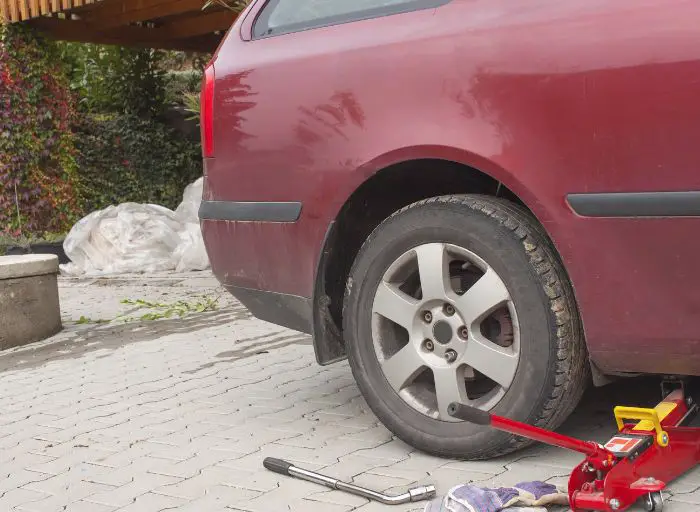
Adapting tires to the current climatic conditions ensures the greatest possible safety, short braking distances and optimized driving pleasure. At the same time, tires are the parts on the car with the highest wear potential and must be changed and purchased accordingly on a regular basis. We have compiled tips and information to ensure that you find the right summer tires for your vehicle and your individual driving style.
Table of Contents
What Must Be Considered when Buying New Summer Tires?
There are many reasons for buying summer tires. On the one hand, it is a safety factor to adapt the tires to the climatic conditions and the corresponding surface. In addition, the handling of the vehicle is optimized. With summer tires, you succeed in steering faster and more precisely. This makes it easier to negotiate tight curves, for example.
If you already have winter tires, the purchase of summer tires is recommended. Changing them regularly may seem annoying at first, but it should be considered an additional safety check.
When buying summer tires, they should pay attention to some factors: The individual driving style is decisive for the right tire choice. Do you use your car only in the city or do you often drive long distances with it? When buying tires, pay attention to the features of the tires and adjust them to your needs.
Sometimes the tires specified by the manufacturer are not the ones that best suit you. Do your own research. A professional can also help you find the perfect tires.
Which Summer Tire Fits My Car?
There are two ways to determine the right size of summer tires for your vehicle: Looking at the vehicle registration document or the registration certificate or checking the tires that are currently mounted.
In the vehicle documents, you will find information on size, load index, and the permissible speed index. In the registration certificate, which has replaced the vehicle registration document since 2005, the tire dimension and size can be found under 15.1 and 15.2. If you still have a vehicle registration certificate, these are listed under 2.1 and 2.2, respectively.
Another way to determine the tire size is the CoC papers (Certificate of Conformity), formerly also called EWG Certificate of Conformity. This certificate is usually supplied with the car when it is purchased but can also be requested from the car manufacturer at a later date. However, many of car manufacturers charge a fee for this. The chain of custody documents contains information on the tires and rim size as well as their possible combinations.
Another easy way to determine the correct summer tires is to look at the tires you have mounted. Make a note of the information you find on the sidewall of the tires you need to change. The size listed on the paperwork may differ from the tire size installed. Often, more than one size will fit, but only one is listed in the paperwork.
Why Can the Dealer Help With The Decision?
If you are unsure which are the right summer tires for your vehicle, you should definitely consult a specialist. In addition to the information on size, load, and speed index, here you will also be advised on the individual characteristics and features of the tires. After all, depending on the owner’s personal driving style and priorities, tires can be optimized for factors such as safety, sportiness, or speed. The more you optimize your choice for one characteristic like speed, often the less optimized it will be in other ways that are also important, like noise and handling. Your mechanic can help you figure out your priorities on all of these issues.
In addition, the specialist can ensure whether tires deviating from the specifications may be used. In the vehicle documents, only one tire size is specified, although several are possible for the vehicle type. The professional knows which deviating size may be fitted. If you want to mount other types of tires, as stated in the vehicle documents, you also need a clearance certificate issued by the professional.
When Do You Need to Buy New Summer Tires?

The tread of tires is probably the clearest indication of the need to buy new ones and get rid of the old summer tires. If the tread depth is less than 3 mm, it is recommended to buy new summer tires. Otherwise, you endanger your own life and the lives of others. This is because a few millimeters of tread depth can increase the braking distance by several meters – even on dry roads. In addition to the safety risk posed by worn tires, you also risk fines during traffic controls.
Depending on driving behavior and wear, summer tires can be used for several years in a row. However, if the summer tires are older than 8 years, they should be changed. This even applies to unused tires. Because over time, the rubber compound of the tires becomes brittle and cracked, the tires lose grip. The date of manufacture can be found on the sidewall of the tires.
The four-digit DOT number indicates the calendar week and year of production. You should also discard summer tires that show damage such as cracks and dents. There is a great safety risk here.
Are Summer Tires Compulsory in Germany?
No. The legal obligation for seasonal tires in Germany has so far only existed for winter tires. In winter road traffic, only winter tires or all-season tires may be used. However, the StVO states that the vehicle’s tires must be adapted to the weather conditions. Summer tires are recommended at a temperature of 7°C and above. The special rubber compound withstands high temperatures and provides good driving characteristics.
Hi there! I’m Naomi O’Colman. I’ve got years of experience working at an auto repair shop here in Texas under my belt. On top of that, ever since I was a kid I’ve been passionate about the auto industry. Since I’ve joined the team at automotivegearz.com I’ve been enthusiastically sharing my passion and insights with my readers. I’m dedicated to delivering high quality content and helping you stay up to date with the latest automotive trends and products out there!







